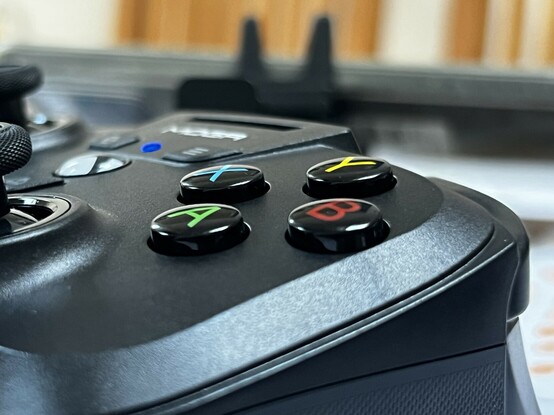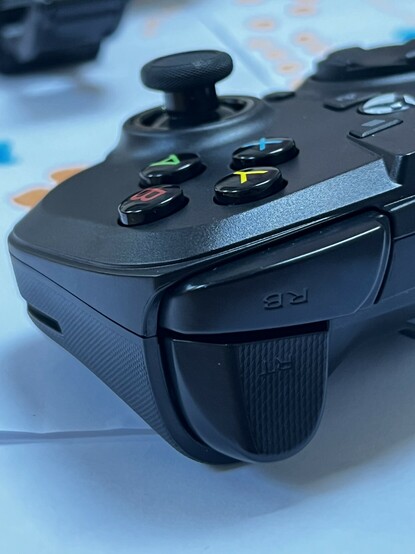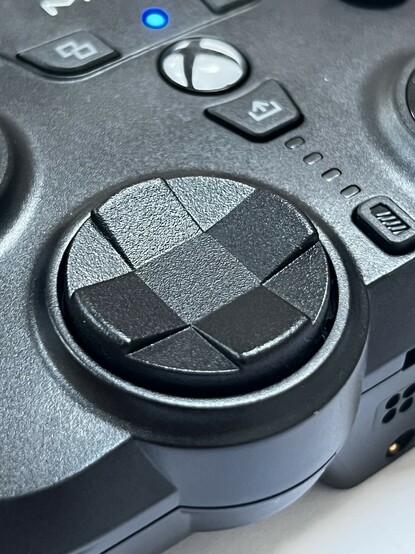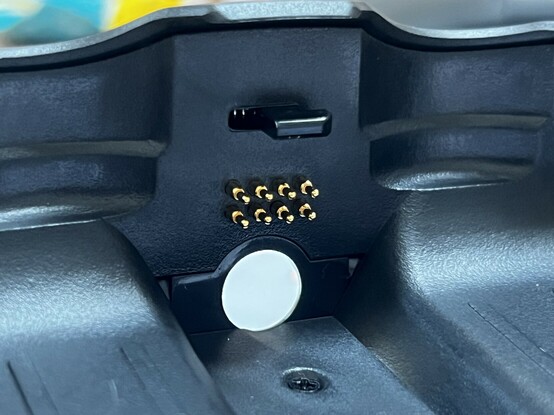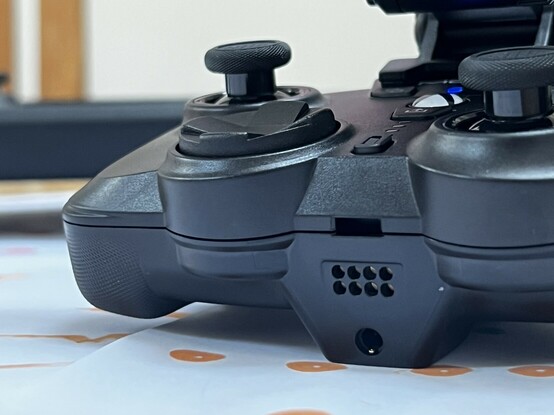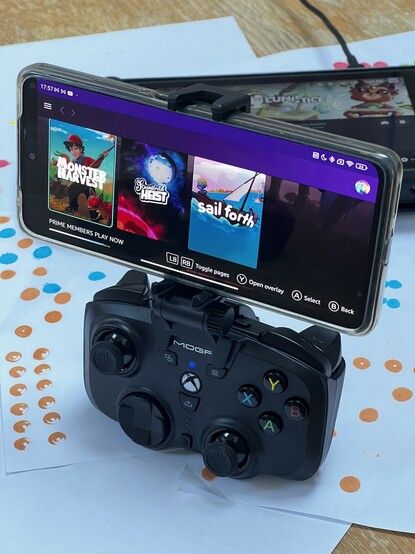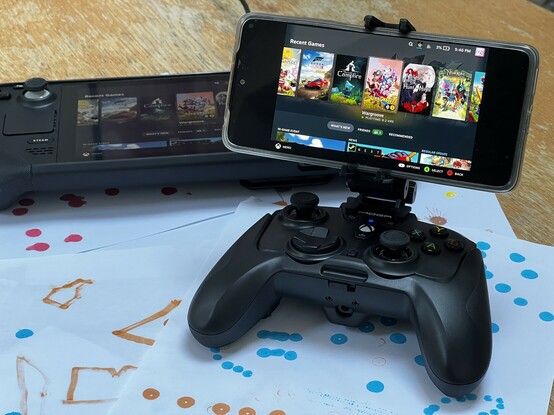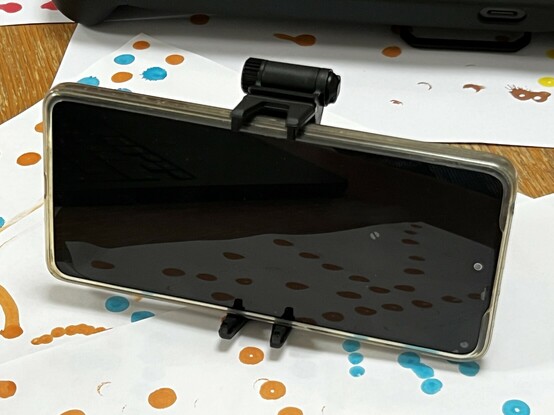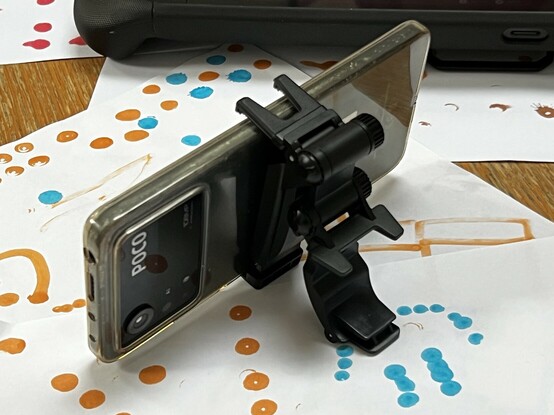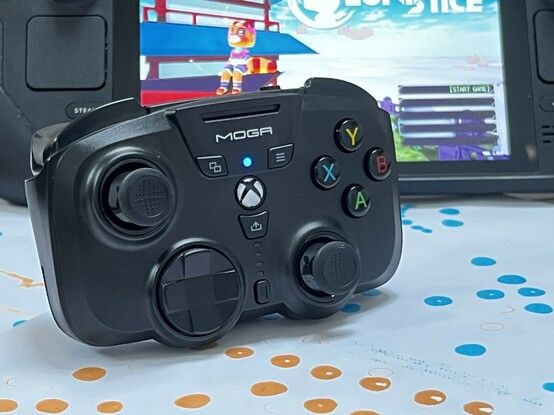PowerA Moga XP-Ultra Controller Reviewed
I’ve tried portable controllers. I’ve tried full-sized controllers. PowerA’s Moga XP-Ultra is the first controller I’ve tried that tries to bridge the gap between the two.
It’s moderately successful at this, but it feels like it’s aimed at a very specific set of needs rather than a flexible catch-all. It supports Xbox X/S, Windows 10/11 and Android – this, by extension, means Linux platforms such as the Steam Deck, and TVs or Projectors based upon Android will also work with it, but the iPhone will – sadly – not. If you own an Xbox, pay for Games Pass Ultimate and want to take streaming games on the go via XCloud on your phone then you’re probably the target market. If you don’t, then you might find the awkwardness of the XP-Ultra’s hybrid design otherwise untenable.
By trying to be all things to all folks, the XP-Ultra necessarily makes compromises and these, unfortunately, do not result in the most comfortable of controllers. Between the mini/full-sized pad, and the option to use or forgo the mobile phone clip the XP-Ultra offers four configurations to cover various gaming needs.
Full sized shoulder buttons. Full sized face buttons. A very tactile D-pad. I heard you like travel on your travels.
Let’s cover each of these-
Full controller
Using the Moga XP-Ultra as a full-sized, Xbox-style controller may well be its most common use-case. In this mode the smaller “mini pad” slots into a larger shell that includes hand-grips, additional rumble motors and two mappable underside buttons.
This is, by far, the most comfortable way to use the XP-Ultra, but it’s marred somewhat by the interface between the controller and the additional grip. There’s a very clear, raised delineation between where one ends and the other begins, offering an enticing nest for dirt and grime.
Despite this, the XP-Ultra feels and handles more or less like a vanilla Xbox controller, mirroring the faceted D-Pad and approximate button layout, but gaining a few quality of life features. There’s a battery indicator front-and-centre to let you know how much more of The Halo: Finite you can play before needing to charge. The thumb-sticks have extra textured grips toward the middle.
The additional buttons underneath can be bound to a regular button of your choice. PowerA’s manual for the Moga XP-Ultra lists X/B/X/Y/LT/RT/LB/RB but I found the stick buttons also mapped just fine. This is great for binding L3/R3 (or whatever Xbox call them) to the paddle buttons so they’re much easier to press while using the sticks.
Binding a button is done entirely with the controller, there’s no configuration software involved here. Just press and hold the “MOGA” button underneath for three seconds, press the button you want to map (that is, the face button) and then press the paddle you want to map it to. This is quick and easy enough that you can re-bind these as your game loads. That is, of course, unless you’re using the-
Mini Pad
At the front of the full controller there’s a little sliding latch which ejects the mini pad from the full-sized grip. Quite ingeniously the eight pogo-pin spring contacts – which connect the additional two rumble motors and three buttons – also act as a spring mechanism to push the mini pad clear of the latch for easy removal.
Eight pogo pins form the interface between the mini pad and it’s full-sized hand-grip add-on. These are presumably -/+ for each rumble motor, plus three pins for each of the buttons on the grip and one common (ground probably) for the buttons.
Without the hand-grips the controller – or mini pad – is an odd duck. It’s still quite bulky and has the gentle suggestion of ergonomic grips, though these don’t serve much of a purpose. It’s very difficult to hold such that your index and middle fingers can cover the triggers, but angling the controller slightly with your fingers on the triggers is surprisingly manageable.
Without the additional hand-grips the mini-pad is considerably more compact, but unlike – to throw the Razer Kishi under the bus here – some other portable controllers you’re not compromising on the controls at all. The triggers are still nice, big triggers with a smooth action, the bumpers are big and reachable, you get full-sized analog sticks and the button spacing is exactly what you’ll be used to on a full-sized controller. And that’s effectively what it is- rather than compromise on familiarity and comfort and build something that’s smaller PowerA have compromised on portability and made something that wont easily slip in a pocket (though it’s actually smaller – but thicker – than the Kishi). And there’s the rub- the mini pad is definitely more portable than a full-sized controller, but it’s bulkier than – for example – the fully–featured 8bitdo N30 Pro 2.
Very tiny controller is tiny, yet it still has the control quality and placement of its full-sized counterpart. The app shown is Amazon Luna. The free game selection isn’t too compelling…
Aside from being – let’s face it – uncompromisingly ugly the mini-pad form of the Moga XP-Ultra is a very capable trade-off between functionality and portability.
Full controller + Phone mount
For mobile gaming at home, where portability isn’t a huge concern, you can connect the supplied mount to the controller and grip combo. It’s specifically designed for the XP-Ultra so it hooks over the top of the controller and clips into a recess underneath. Two points of articulation give you reasonable control over where the phone sits. You can bring your phone reasonably far forward over the controller for a more comfortable center of gravity, but the mount does block the Start/Select (or Start and Back if you will) buttons in some configurations and always sits awfully close.
Using Steam Link with a Steam Deck is pretty redundant, but it works!
This setup – a phone clamped to a controller by means of an articulating grip – will never not feel awkward to me. I do, however, have to concede that a full-sized controller is much, much more comfortable to hold than any of the portable versions I’ve tried. If I were gaming on the go with the XP-Ultra I would leave the grip at home and just stand my phone upright with an appropriate case.
Mini pad + Phone mount
Removing the mini pad from its full-sized grip can be done while the phone mount is attached. In fact the attachment points are right on the mini pad itself, so it’s quick and easy to slide the grip on/off if you’re so inclined.
Without the grip you lose access to the bonus paddle switches, but gain that smaller footprint and still a very decent handling controller.
With less to hold on to, however, the mini pad feels even more awkward with an attached phone. The Poco X4 Pro which I used in my tests weighs just over 220g which just so happens to be almost exactly the same as the mini pad and grip. This combined 440 grams of weight is a good deal more than a Nintendo Switch Light so – again – I would probably leave the grip at home and use a suitable phone stand.
The phone mount… is a kickstand?
Okay PowerA probably didn’t plan it this way, but if you’ve got a shell case on your phone and don’t want to shop for an alternative with a kickstand, the phone grip supplied with the XP-Ultra actually does a pretty good job as one.
IMO the phone and controller combo is too darn heavy and too darn awkward. Fortunately the little grip also - rather hackily - doubles as a kickstand.
You just whip it off the controller, hook it over the phone, and pose it until you get your desired viewing angle. Sure it’s not super stable, but it does the trick.
So, overall?
If you’re rocking an Xbox, Game Pass Ultimate and like to take your current gaming fixation from the living room to bed then the XP-Ultra is an ugly, but functional way to go. It’s one of the better portable controllers I’ve tested, simply because it doesn’t compromise on analog sticks, triggers or button spacing. It’s for this reason that I might use it as a companion for my Steam Deck. I don’t get on particularly well with the Steam Deck controls, but I’ve got a great JSAUX case with a kickstand so I can play it like you would a Switch with the Joycons removed.
I don’t get on super well with the buttons on the Steam Deck so perhaps this is the answer.
The XP-Ultra will, in theory, pair to two devices and switch between them with a double-tap of the pairing button. I haven’t quite got the hang of this yet, probably because I’ve paired it to everything in sight from my iPhone (it doesn’t work, surprise surprise) to my Linux laptop (works fine, but no rumble) to my Steam Deck
The elephant in the room for the XP-Ultra is the price. At time of writing it’s £124 from Amazon, and that moolah will get you a boxy but compact Razer Junglecat (currently on sale) and an Xbox One controller. If you really, really value taking basically the same controls on the go as you use with your Xbox Series X (or S) then you might find that price reasonable. The same applies if you’re looking for a no-compromise controller that’s just a little bit more portable than full-sized to chuck in a bag with a Steam Deck or gaming laptop.
In closing, I can’t really shake the feeling that the hybrid design is a solution looking for a problem. The mini pad is the hero here, and everything else feels a little superfluous. The mini pad alone could be a very solid offering for those of us who appreciate a full-sized controller experience in a compact, portable packet. Not needing to dock into a full-sized grip could certainly afford room to fix its ugly, angular looks. And those paddle switches could even move to the bottom of the mini pad itself. So how ‘bout it PowerA? When do I get my sleek Moga XP-Mini in Aurora Borealis colours?
